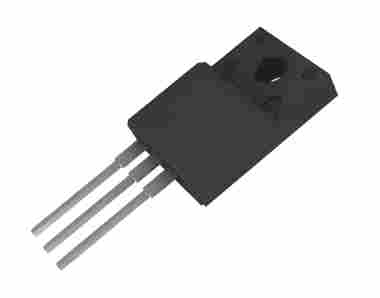Schottky diodes have several key characteristics due to their unique physical structure (metal semiconductor junction instead of PN junction): extremely low forward conduction voltage drop (usually 0.15V-0.45V), ultra fast switching speed (almost no reverse recovery time), and high forward surge tolerance. However, at the same time, its reverse leakage current is relatively large, and the reverse breakdown voltage is usually low (generally below 200V, often below 100V).

Therefore, in the following scenarios, Schottky diodes are usually the better or even the only choice:
Low voltage, high current rectification (core advantageous application):
Scenario: Output rectification of switch mode power supplies (SMPS), freewheeling diodes of DC-DC converters (especially buck converters), input protection rectification before low dropout linear regulators (LDOs).
Reason: In applications with low output voltages (such as 3.3V, 5V, 12V) and high output currents, the conduction voltage drop loss (P=Vf If) of rectifier diodes accounts for a very large proportion of the total loss. The extremely low Vf of Schottky diodes can significantly reduce this loss (compared to the Vf of ordinary silicon diodes of 0.7V-1.1V), improve power efficiency, reduce heat generation, and allow for more compact designs or larger current outputs. Its fast switching characteristics also perfectly match the requirements of high-frequency switching power supplies.
High speed switches and digital circuits:
Scenario: Clamp diodes (to prevent voltage overshoot), protection diodes, sample and hold circuits, high-speed gate circuits, RF detection/mixing (utilizing their nonlinearity) in high-speed logic circuits.
Reason: Schottky diodes have almost no reverse recovery time (trr). Ordinary PN junction diodes require time to clear the minority carriers in the junction region when switching from conduction to turn off. This "reverse recovery time" can result in significant turn-on losses, voltage spikes, and electromagnetic interference at high frequencies. Schottky diodes are majority carrier devices that can be turned off almost instantaneously, making them particularly suitable for high-frequency (MHz or even GHz level) switching applications. They can ensure signal integrity, reduce switching losses and noise.
Prevent reverse current backflow/power path management:
Scenario: Preventing battery current from flowing back into the charging circuit or power adapter in battery powered devices, the "OR" logic in multi power input systems (selecting the highest voltage source), solar panel bypass diodes (preventing "hot spot effect"), and output terminal protection to prevent external voltage reversal.
Reason: When it is necessary to prevent the reverse flow of current, the reverse blocking characteristic of the diode is utilized. Due to its low Vf, Schottky diodes have smaller voltage drop losses during forward conduction (especially in battery powered low-voltage systems, where this power consumption is valuable), which is beneficial for improving system efficiency and extending battery life. In the application of solar bypass, its low Vf can also reduce power loss (although it requires a trade-off of larger reverse leakage current).
High frequency applications (utilizing low junction capacitors):
Scenario: Radio frequency (RF) detectors, mixers (as nonlinear components).
Reason: The junction capacitance of Schottky diodes is usually low. In the high-frequency signal path, low junction capacitance means less bypass effect on the signal, lower signal loss, and better frequency response, enabling it to effectively process high-frequency signals.
Summary and key considerations (when not applicable):
The preferred scenario for Schottky diodes: When you are facing the needs of low voltage (preferably<60V), high current, high-frequency switching, and conduction loss is the key bottleneck, Schottky diodes are usually the preferred solution.
Avoid using Schottky scenarios:
High reverse voltage application: The reverse breakdown voltage of Schottky diodes is generally low (commonly<100V, industrial grade can reach 100-200V), far lower than that of high-voltage silicon rectifier diodes (up to several thousand volts). In applications such as AC rectification (220V/380V AC) and high-voltage DC bus, high-voltage silicon diodes or silicon carbide diodes must be selected.
High temperature and leakage current sensitive applications: The reverse leakage current (Ir) of Schottky diodes is much larger than that of silicon diodes and increases exponentially with temperature. In high-temperature environments or applications that are extremely sensitive to power consumption (such as ultra-low power standby circuits), larger Ir may become a problem and even lead to thermal runaway (high temperature ->Ir increase ->power consumption increase ->higher temperature ->vicious cycle). At this point, it is necessary to carefully evaluate or select Schottky diodes with ultra-low Ir or use silicon diodes.
Need for ultra-low noise: In some precision analog circuits, Ir with larger Schottky barriers and its related shot noise may not be as ideal as low leakage silicon diodes.
Core Decision Logic:
Is the voltage sufficient? Determine whether the maximum reverse voltage is within the rated range of Schottky barrier (leaving sufficient margin).
Does wear and tear hurt? If the system is low voltage and high current, conduction loss is the main heat source or efficiency bottleneck, and Schottky's low Vf advantage is significant.
Is the speed fast enough? If the operating frequency is high (>100kHz, especially above MHz), the ultra fast switching speed of Schottky (without reverse recovery) is crucial, which can significantly improve efficiency and reduce EMI.
Is the temperature high? Are you afraid of leakage current? Assess the impact of working environment temperature and Ir. Caution should be exercised in applications that are sensitive to high temperatures or Ir.
In short, Schottky diodes are a powerful tool for solving the problems of conduction loss and switching speed in low voltage, high current, and high frequency scenarios. However, in the face of high voltage, high temperature, and ultra-low leakage requirements, other types of diodes need to be considered.
